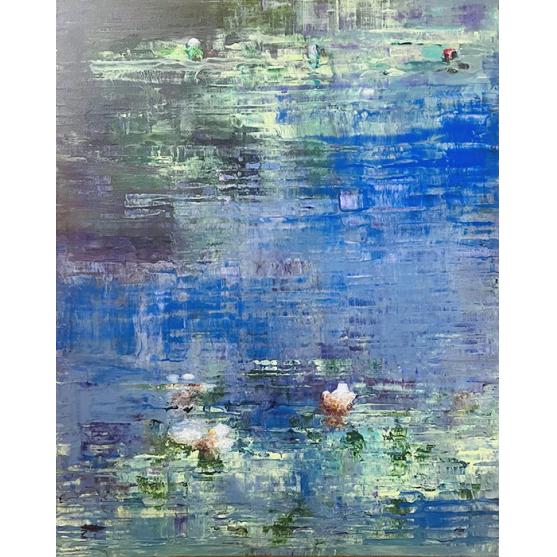FOR IMMEDIATE RELEASE
October 20, 2018
Contact: Tamar Russell Brown, Gallery Sitka — 978.425.6290
Women Artists on What the Word “FEMALE”
Means to Them — 30 Videos from 30 Countries at Gallery Sitka
FITCHBURG, Mass. — C.M. Judge and Veronique Sapin met in France some years ago and immediately saw each other as friends and artistic allies. The two video artists understood how important it was to form a collective of women video artists from all over the world. “We felt there needed to be more opportunity for really great video art to be seen,” says Ms. Judge. Thus FemLink was born.
“These are women looking at women,” Ms. Judge continues. “What’s important here is the power of women’s art and the insight of the female gaze.” In the long tradition of art in the West and elsewhere, the male gaze has dominated, with all the objectification and stereotyping that implies. Hence FemLink is opening up a whole new world in this field.
Ms. Judge and Ms. Sapin, as the co-curators of FemLink, have assembled many video collections by reaching out to women whose work in video has intrigued them, and asked those artists to produce a two-minute video on a common theme expressly for the FemLink project. The theme for this group of 30 videos is “Female.”
The group, collectively called a “video collage,” runs a little short of an hour. Regarding the two-minute time limit, Ms. Judge says, “The good news here is that a video which you don’t especially care for, you’ll only have to watch for two minutes. The bad news is that with a video you like very much, it will end leaving you anxious to see more.”
One of the primary goals of the project has been inclusion — to bring together women coming from many different cultures, political situations, and religious and social traditions. “It was Veronique who insisted that we have only one video from each country,” Ms. Judge reports. The co-curators wanted to show the tremendous “global variety” of this artwork and to reach out to as many nations as possible. FemLink has invited 145 video artists from 64 different countries to participate in the project.
The collective indeed reaches far and wide, including many different styles and viewpoints. Lucy Azubuike of Nigeria, in “Everything Goes Down with Her,” presents what looks like a breast made of wax melting as the fabric framing it is set on fire. The image is frightening and may have political as well as aesthetic connotations, perhaps on such preoccupations as the savagery of war and the vulnerability of women in wars typically made by men.
“<0.0.0.>” by German video artist Angelika Rinnhofer shows us several women each photographed from the waist up, though the shot does not include their heads. Perhaps this is meant to emphasize their gender but not their individuality. That seems to suit the action, since each woman is doing the same thing — pulling that membrane we all find surrounding the white of a hard-boiled egg, which here has apparently gotten stuck in the shell, or rather just a broken fragment of shell. The image seems to say more about death than about birth.
“S/H/A/P/E” by Ste Ternes of Luxembourg shows us a figure made of clay of a dark, dull shade of red, held in a woman’s hands. The woman also holds a slender knife. We see only her hands, the knife, and the figure. The figure is somewhat larger than the woman’s hands and resembles sculptures found in Neolithic cultures of a very large, exceptionally well-fed woman — a common symbol of fertility and robust health in ancient societies. The figure has no facial features whatever. The woman begins to cut the figure apart with the knife. A woman’s voice is the only sound-track other than the sound of someone humming a little improvised tune. As the woman continues lopping off pieces of the figure, the voice catalogues do’s and don’ts of “How to be a perfect woman.” She begins with “Always be nice” and continues to “Always be dressed well” and “Do not eat too much.” Then comes “Never get angry,” “Always be beautiful,” “Never complain,” “Give up your dreams,” and “Always love your man.” By now the woman has reached a pinkish figure beneath the clay. Before long we recognize a Barbie doll — the perfect woman? — emerging from her clay covering.
“Go Find Yourself” by Katya Nikonorova of Kazakstan shows a woman dressed in long robes shining a flashlight into the eyes of people she finds at a public park. The light from the flashlight shows up even though it is a sunny day. Accompanied by music and some very strange sound effects, the video ends with the woman climbing up onto a pedestal and holding the flashlight high above her, completing a comical comparison to the Statue of Liberty.
“In the Robing Room” by Aine Phillips of Ireland presents a woman seeming to disrobe, that is, to take her robe or gown off rather than put it on. But she is having some difficulty and cannot seem to get it over her head — indeed her face is covered by the robe from start to finish. To one side a shadowy figure appears, in the same scale as the woman struggling with the robe. This second woman is “underexposed” photographically, so that she appears to be a bit of a ghost. But she ends up exposed physically, as she is naked by the end of the video. Are these two aspects of the same woman?
“Female Females” (or “Femme-Femmes”) by co-curator Veronique Sapin puts two sets of images together. The first concerns a woman (again, dressed in heavy garments that seem to encumber her rather than free her) who we come to see is walking on a high-wire. We cannot see the ground in the shot, but nevertheless we are startled when she falls off the high-wire. An even more alarming shot follows, with only her long gown visible as it follows her body as she plunges to Earth. This black-&-white image is followed by a scene in color, a demonstration and march of many women holding up signs in many different languages.
Ms. Judge’s video, “Her Life Unwrapped,” shows us an older woman’s face in close-up, then complemented by the face of a much younger woman, her eyes closed, then open. The two women’s hands come together in close-up in a kind of embrace. Then the older woman’s hands lovingly grasp the younger woman’s face. Of course we are seeing two different persons (or actors) here, but the idea of an individual relating to memories of herself at different stages of her life is also possible.
“No Comment,” by Vouvoula Skoura of Greece, also expresses something about women in youth and in old age. With almost total silence on the soundtrack, the viewer is somehow not “allowed” to look away from the single character in this piece, a very old woman who at first is in complete profile to us. Behind her is an oil painting, a portrait that we slowly begin to see must be the old woman when she was young. (Indeed the end credits note the painting as a work from 1963, more than 50 years ago. Hence the old woman could be in her eighties and the young woman in the portrait in her twenties or thirties. We also might think of the younger woman as another “character” in this video.) We can’t help noticing that the old woman is in fact making no comment, as the title points out. But she seems to be trying to. She seems to be trying to speak. Or rather, she wants to speak but is actively stifling herself. She does not smile, but a tremendous emotion seems to be pouring out of her nonetheless. The young woman in the painting is smiling pleasantly, seemingly very self-satisfied. We cannot know if this indeed is how the young woman projected herself when she sat for the portrait. She may have been the rather complacent, privileged person we see in the painting. But it is also possible that the painter chose to present her in that light. We do not know. When the old woman turns her head to look at us, she continues to struggle to speak or to hold back what she wants to say. Her eyes and her mouth say so much in complete silence and without uttering a single word. One is tempted to look away but cannot. The image is heartbreaking because the old woman’s dilemma, and her pain, are so obvious.
This event will take place at Gallery Sitka, 454 Main St. in Fitchburg, on Saturday, Nov. 3 at 3 p.m. Visit gallerysitka.com and femlink.org for more information about the screening. Ms. Judge will introduce the screening and take questions from the audience afterwards. Admission is $5.00.
# # #

